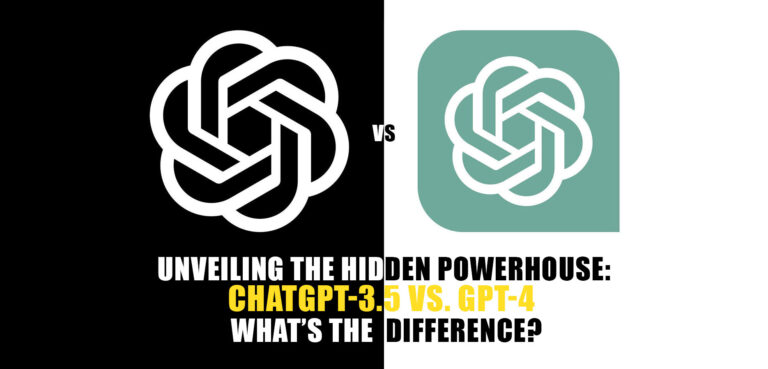ChatGPT 4 and ChatGPT 4 Prompts, the latest version of OpenAI’s language model, offers remarkable capabilities in generating human-like conversational responses. However, to elicit the desired outcomes, well-crafted prompts play a crucial role. In this article, we will explore five quick tips to effectively write prompts for ChatGPT 4, enhancing its performance and generating engaging conversations.
Tip 1: Understanding ChatGPT 4‘s Prompt Format
When it comes to structuring prompts for ChatGPT 4, it is important to capitalize on the different instructions available. These instructions include system, user, and assistant instructions, each serving a distinct purpose.
A. System Instructions
The system instructions in ChatGPT 4 help set the tone, personality, and behaviour of the AI’s responses. By utilizing system instructions effectively, you can tailor the AI’s output to align with the desired intent and create a consistent conversational experience.
B. User Instructions
User instructions play a vital role in guiding the AI’s response. To obtain the desired information or fulfil a specific request, it is essential to provide clear and specific guidelines within the user instructions. This clarity ensures that the AI understands the user’s expectations and generates relevant and accurate responses.
C. Assistant Instructions
To make conversations with ChatGPT 4 more engaging, leveraging assistant instructions can significantly enhance the AI’s style and approach. Assistant instructions help shape the conversational dynamics, allowing you to specify the assistant’s behaviour, such as being more formal or informal, using certain phrases, or adopting a particular persona.
Tip 2: Framing Open-Ended Questions for Discussion
Crafting well-structured and thought-provoking questions is key to stimulating ChatGPT 4’s responses and fostering engaging conversations. By employing certain techniques, you can generate open-ended questions that encourage the AI to provide expansive and detailed answers.
A. Crafting Open-Ended Questions
Closed-ended questions hinder the AI’s ability to generate elaborate responses. To overcome this limitation, focus on crafting open-ended questions that prompt the AI to provide detailed explanations, opinions, or suggestions. This encourages the AI to delve deeper into the conversation, resulting in more dynamic interactions.
B. Simulating Specific Scenarios
To enhance the quality and realism of the conversation, incorporating scenario-based questions can be highly effective. By creating hypothetical situations or realistic scenarios, you can instigate deeper engagement with ChatGPT 4, as it taps into its ability to imagine and provide contextually appropriate responses.
Tip 3: Utilizing Contextual Prompts
Context is crucial in improving ChatGPT 4’s understanding and generating more relevant and coherent responses. By skilfully incorporating relevant information and leveraging previous conversations, you can enhance the AI’s comprehension and maintain continuity throughout the dialogue.
A. Contextual Understanding for Better Responses
To optimize ChatGPT 4’s responses, it is important to provide contextual information in the prompt. By including relevant background details, you help the AI better grasp the topic at hand, enabling it to generate more informed and comprehensive responses.
B. Incorporating Previous Conversations
To create a sense of continuity and coherence, refer back to previous interactions within the prompt. By referencing specific statements or conversations, you establish a connection between the past and present, allowing ChatGPT 4 to build upon prior knowledge and generate responses that align with the ongoing dialogue.
Tip 4: Injecting Humour and Creativity
Humour and creativity can greatly enhance the conversational experience with ChatGPT 4. By incorporating wordplay, puns, and humorous phrases, you can elicit engaging and entertaining responses from the AI while maintaining clarity and avoiding confusion.
A. Using Puns, Wordplay, and Humorous Phrases
Wordplay and puns can spark the AI’s imagination and generate more engaging responses. By cleverly utilizing language and incorporating humour into your prompts, you create an enjoyable conversational atmosphere that stimulates creative and witty AI responses.
B. Encouraging Creative Outcomes
To encourage inventive responses from ChatGPT 4, incorporate prompts that inspire outside-the-box thinking. By presenting imaginative scenarios or posing challenging questions that require unconventional solutions, you invite the AI to tap into its creative capabilities and generate unique and surprising responses.
Tip 5: Iterative Improvement through Prompt Experimentation
To continuously improve the quality of AI-generated responses, it is crucial to engage in experimentation and iteration when crafting prompts. By collecting feedback, analysing performance, and refining prompt design, you can drive enhancements over time.
A. Collecting Feedback for Optimization
Gathering feedback on AI-generated responses is essential for prompt optimization. By incorporating user input and monitoring the performance of different prompts, you can identify areas for improvement and refine the prompts accordingly.
B. Analysing and Refining Prompts
Utilize tools and approaches to analyse the performance of different prompts. By identifying patterns, strengths, and weaknesses in prompt design, you can iteratively refine and optimize prompts to achieve the desired conversational outcomes.
Conclusion
Writing well-crafted prompts is paramount in unlocking the true potential of ChatGPT 4. By investing time and effort into prompt development, experimentation, and refinement, you can create captivating and dynamic conversations that continually push the boundaries of AI interaction. Embrace the opportunities offered by ChatGPT 4, and let your imagination and creativity guide the way to compelling dialogues.


5 Quick Tips on How to Write ChatGPT 4 Prompts